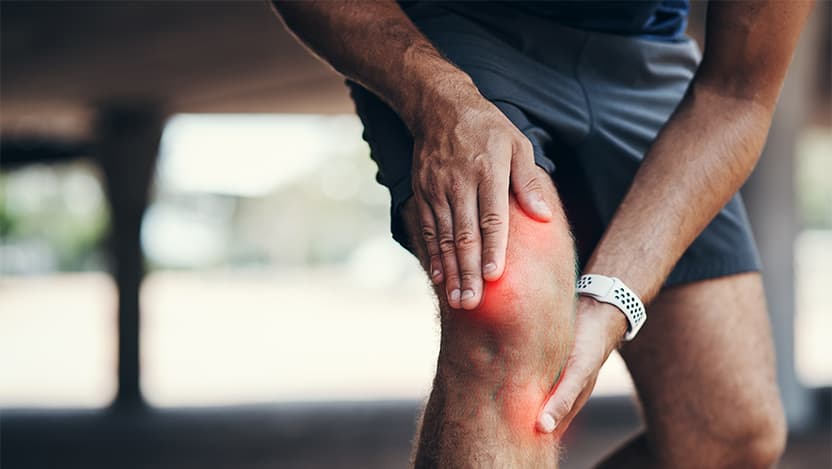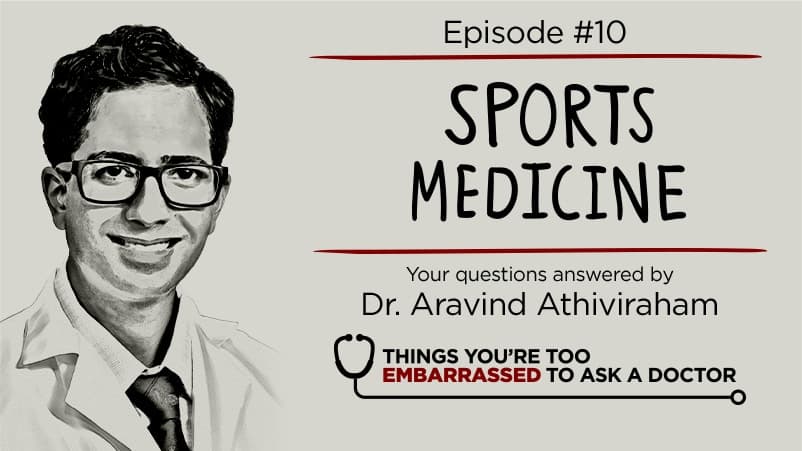Arthritis: What is it, what causes it and how to treat it?

Osteoarthritis (OA) is the most common type of arthritis, and is often blamed on wear and tear. Right now, there are millions of Americans with OA, and their joint pain, swelling and stiffness can become a chronic condition that is felt most commonly in the knees, hips, lower back and neck, but can also effect smaller joints of the feet and hands. This is why it’s so important to learn as much as possible about arthritis in order take steps to improve your OA now.
After treating many patients with joint pain due to OA, we routinely get questions about how to prevent and/or treat arthritis, and we wanted to answer those common queries so people would understand what causes OA and what can be done to minimize the impact of arthritis.
What is arthritis?
Arthritis is a group of symptoms that can include joint pain, swelling and stiffness. These symptoms are a sign of inflammation in the joint. The inflammatory process produces cytokines, which can damage cartilage cells, called “chondrocytes.” In short, arthritis is the loss of cartilage within the joint, which is the rubbery material covering the ends of bones. As that cushioning between the bones starts wearing away, the inflammation worsens and joints begin to hurt.
How is arthritis diagnosed?
If you are experiencing joint pain and swelling, it could be time to reach out to your physician to learn more about your risk of OA. Besides a comprehensive history and physical examination performed by your physician, X-rays are an important first test in the diagnosis of OA. In the early stages, X-rays will show joint space narrowing. Later, bone spur formations, cysts and changes in the bone around the joint are seen. In the final stages, there is a complete loss of cartilage and the joint is often “bone on bone.”
What does arthritis feel like?
Arthritis can take many different forms. In the early stages, arthritis may feel like an ache that comes and goes, and may be related to certain activities. As arthritis progresses, the ache becomes more relentless. Painful locking and catching may occur within the joint. Climbing stairs and getting in and out of a car may become difficult. In advanced arthritis, the joint may become very stiff, swollen and painful particularly with weightbearing.
What causes arthritis?
We think that there’s largely a genetic predisposition for osteoarthritis. There are components of wear and tear, but that’s not the driving force. The arthritis is more likely caused because of the way your cartilage was designed.
Besides genetics, other factors that can contribute to arthritis include major injuries at or around the joint. Breaking a bone or a ligament injury may increase the risk of developing arthritis.
Stress on the joint also contributes to the development of arthritis. Obesity is the most common cause of increased stress on the joints. Inflammation plays a role in the process of arthritis as well, and some forms of arthritis are considered more “inflammatory” in nature. Less common causes of arthritis include osteonecrosis, which is the loss of blood supply to the bone, and certain childhood conditions affecting the mechanics of the joint.
There is a complex relationship between genetics, injury and mechanical stress, all of which are thought to contribute to the development of arthritis in the joint.
How to prevent arthritis?
Though arthritis cannot be completely prevented, you can minimize your risk and control symptoms — to some degree — by maintaining a healthy weight and remaining active.
For prevention, exercise and strength work should be at the top of your list. The more active you are the better off you will be. Weight-bearing force helps maintain joint health. Strengthening muscles around the joints is also key to reducing pain and taking stress off joints.
How to treat arthritis?
Treating arthritis requires each patient to be fully invested in their our own care. While we do offer traditional treatments, such as anti-inflammatory medications, injections and surgery, they are not the only way to increase joint mobility, reduce pain and promote faster healing.
Managing your arthritis focuses primarily on exercise, physical therapy as well as proper diet and nutrition to achieve and maintain a healthy body weight. Muscles are a very important component of stability and structure around joints and can often slow the degenerative changes of arthritis if maintained with exercise and physical therapy.
It’s best to avoid high-impact exercise like running or repetitive jumping if it makes your joint pain worse, although those activities won’t necessarily worsen arthritis. We recommend cycling, swimming or the elliptical trainer as a low-impact alternative.
Additionally, maintaining a healthy weight, even a 5- to 10-pound weight loss can have a tremendous impact on reducing joint pain.
When it comes to managing pain, gentle stretching, yoga and tai chi may also improve flexibility and reduce stiffness and pain. Options for pain include acetaminophen or an anti-inflammatory pain reliever such as ibuprofen, but there isn’t enough evidence to support taking supplements, such as glucosamine, to treat arthritis. There is some evidence that following an anti-inflammatory diet may reduce symptoms of arthritis.
If acetaminophen or anti-inflammatory pain relievers don’t work, the next steps would be considering injectable therapies such as corticosteroid injections, viscosupplementation injections or platelet rich plasma (PRP) injections to reduce inflammation and pain. Beyond that, you are looking at joint replacement.

Sara Wallace, MD
Sara Wallace, MD, is an orthopaedic surgeon who specializes in joint care. Dr. Wallace treats a wide range of common and complex hip and knee conditions, performing surgical procedures to restore mobility and reduce joint pain.
Learn more about Dr. Wallace
Brendon Ross, DO
Brendon Ross, DO, MS, specializes in non-operative orthopaedics, providing comprehensive primary care sports medicine for adult and adolescent patients. Dr. Ross is an expert in treating a wide range of orthopaedic conditions.
Learn more about Dr. Ross
Orthopaedic Surgery
When injury or illness affects the musculoskeletal system, the experienced and skilled orthopaedic team at the University of Chicago Medicine offers the full spectrum of nonsurgical and surgical care.
Read about our orthopaedic services
